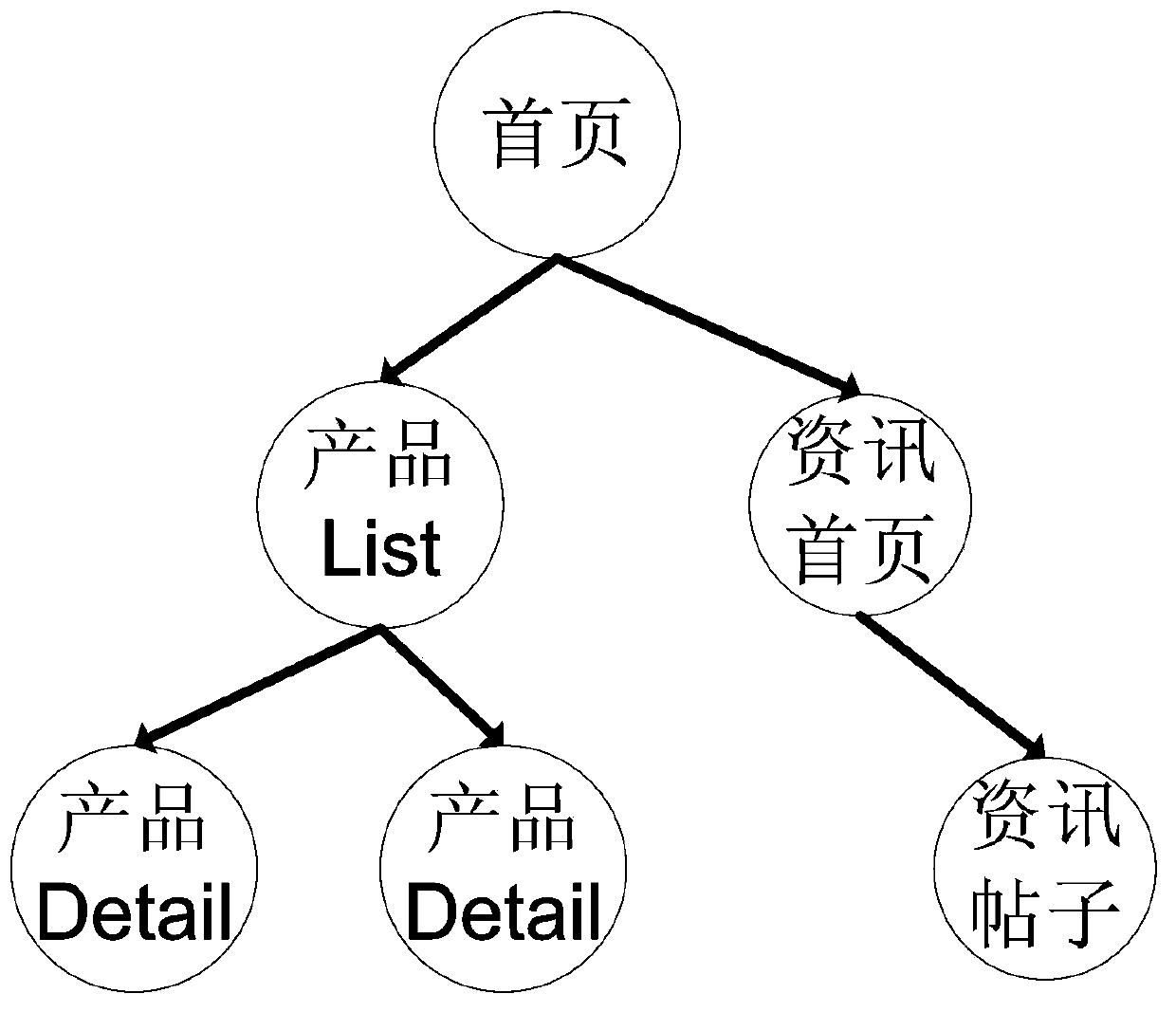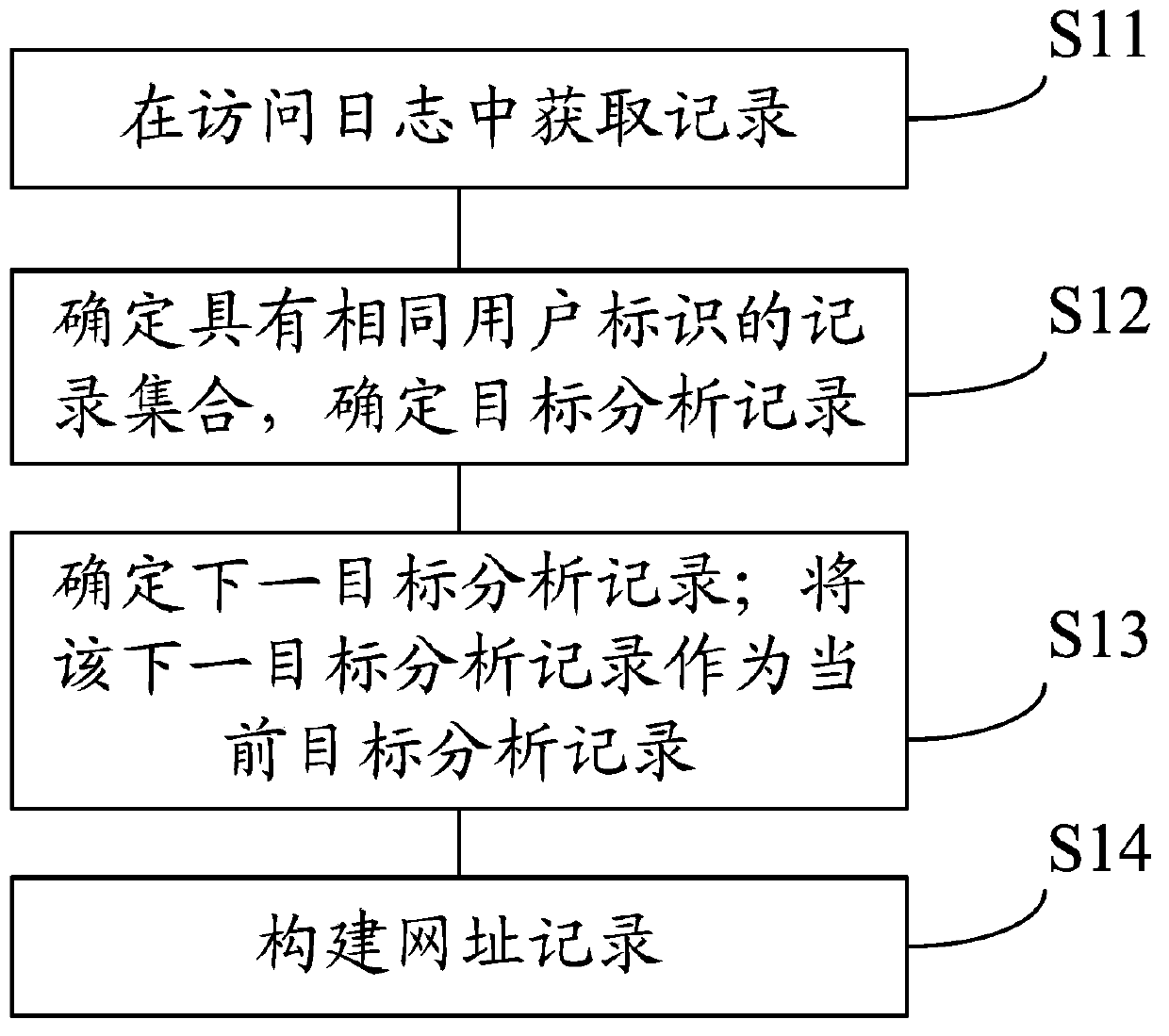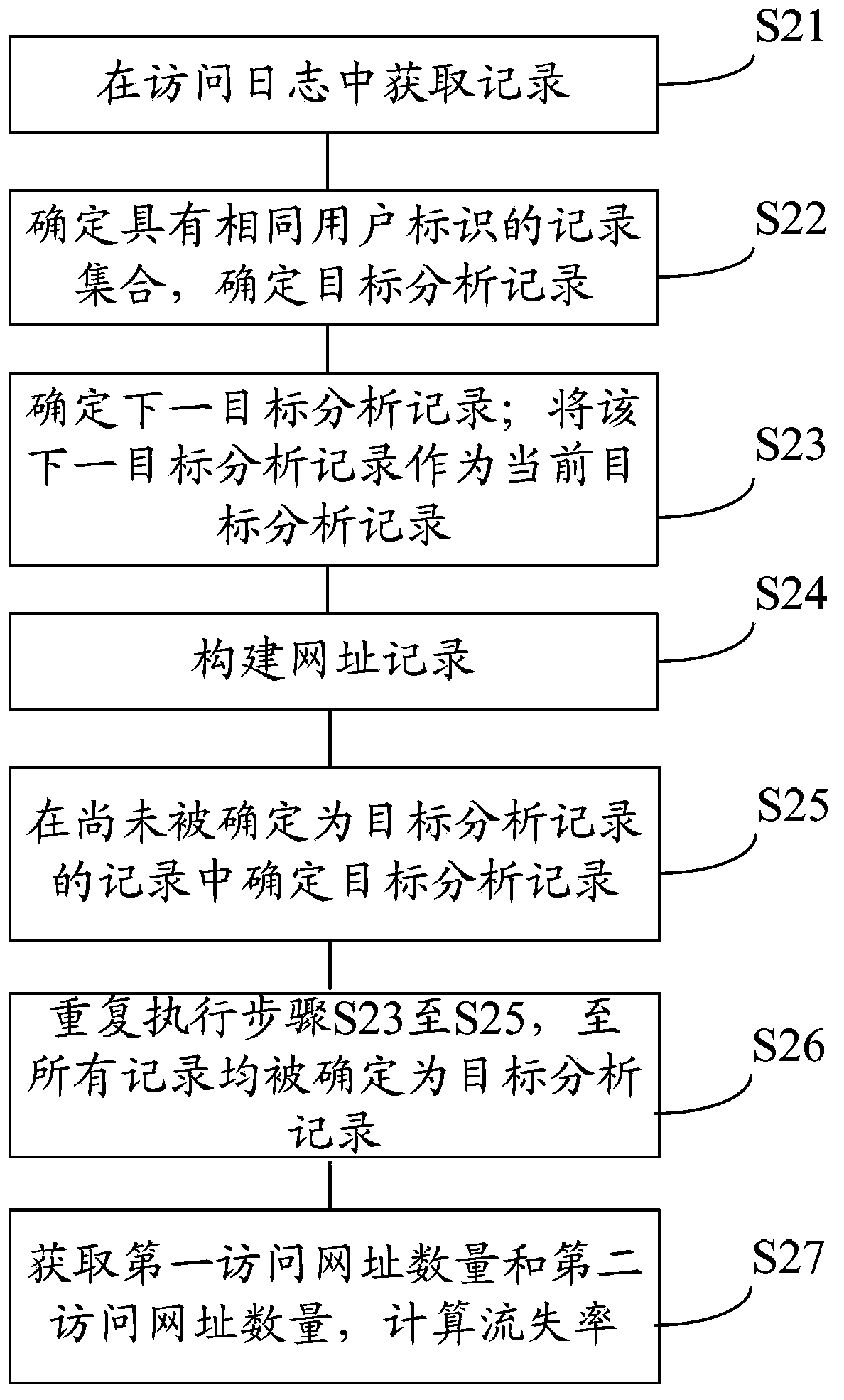Method and device for determining access path and method and system for determining page churn rate
An access path and churn rate technology, applied in the field of website analysis, can solve the problems of large system resource consumption and high computing cost, and achieve the effect of reducing consumption and computing cost.
- Summary
- Abstract
- Description
- Claims
- Application Information
AI Technical Summary
Problems solved by technology
Method used
Image
Examples
Embodiment Construction
[0052] The following will clearly and completely describe the technical solutions in the embodiments of the application with reference to the drawings in the embodiments of the application. Apparently, the described embodiments are only some of the embodiments of the application, not all of them. Based on the embodiments in this application, all other embodiments obtained by persons of ordinary skill in the art without making creative efforts belong to the scope of protection of this application.
[0053] In order to achieve the purpose of reducing computing costs, this application provides a method for determining the page loss rate, such as figure 2 shown, including steps:
[0054] S11. Obtain records including access user ID, access URL, access time and last access URL in the access log;
[0055] In this application, the records in the access log include user ID, access URL, access time and last access URL. The specific records in the access log can be in the following f...
PUM
 Login to View More
Login to View More Abstract
Description
Claims
Application Information
 Login to View More
Login to View More - R&D
- Intellectual Property
- Life Sciences
- Materials
- Tech Scout
- Unparalleled Data Quality
- Higher Quality Content
- 60% Fewer Hallucinations
Browse by: Latest US Patents, China's latest patents, Technical Efficacy Thesaurus, Application Domain, Technology Topic, Popular Technical Reports.
© 2025 PatSnap. All rights reserved.Legal|Privacy policy|Modern Slavery Act Transparency Statement|Sitemap|About US| Contact US: help@patsnap.com



